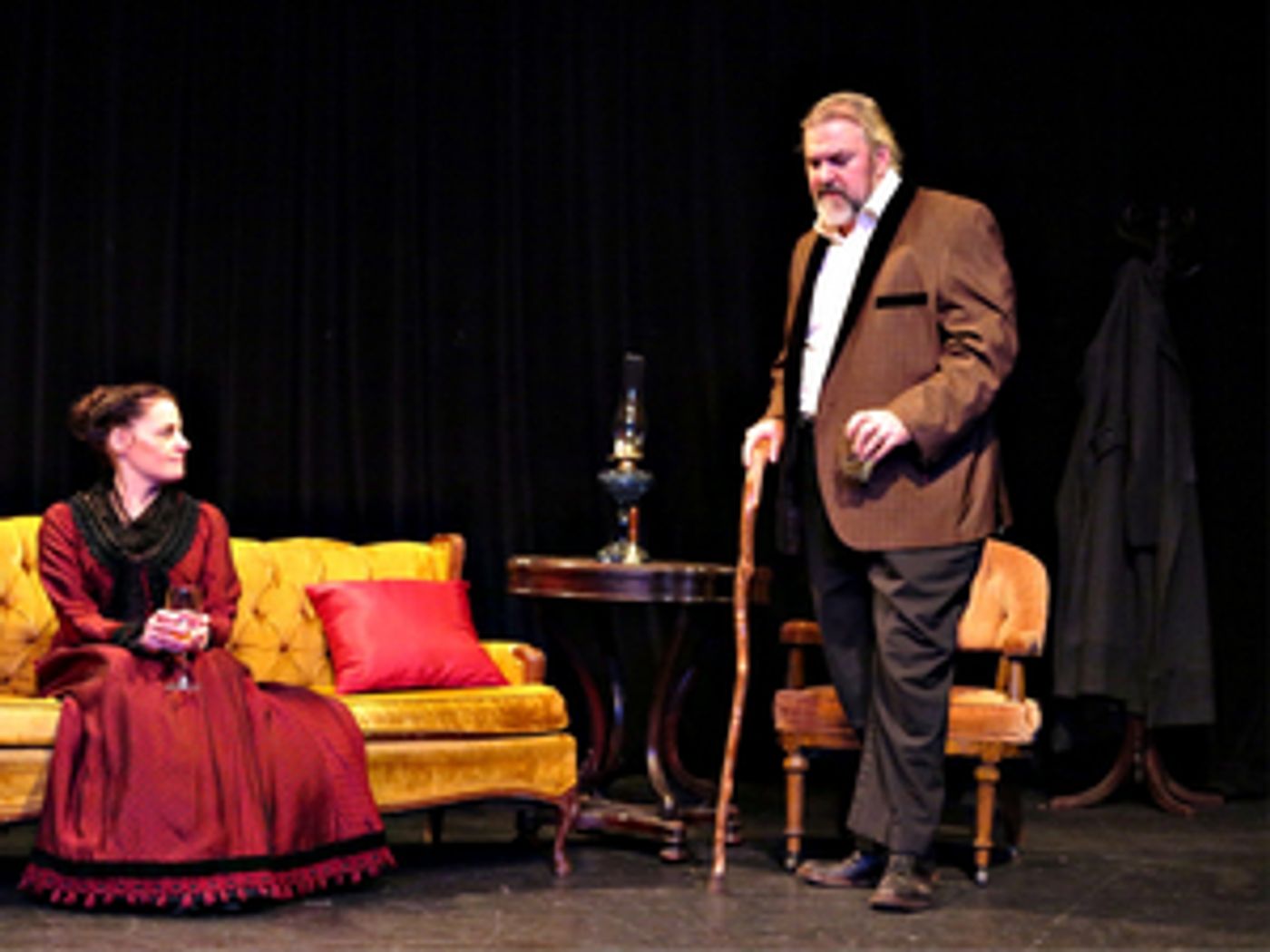August Strindberg Rep Performs DANCE OF DEATH, PARTS 1 & 2 at Theater for the New City This Month
The production runs from February 25 to March 13.

From February 25 to March 13, Theater for the New City (TNC) will present the August Strindberg Rep production of August Strindberg's "Dance of Death, Parts One and Two," newly translated and directed by Robert Greer. The two parts of this play, which were written in 1900, are being performed together in English onstage for the very first time. Translator/director Robert Greer is Artistic Director of August Strindberg Rep, which is a resident company of TNC.
"Dance of Death" is labeled by some critics as Strindberg's greatest work. In an isolated fort Edgar, a captain of a coastal artillery installation, and Alice, his wife, have lived for 20 years, hating each other with a deadly venom and each wishing the other's death. When Kurt, Edgar's cousin, comes to stay in it, he is caught up in the atmosphere of evil. He falls in love with Alice and becomes her associate in a plot designed to destroy her husband. Following a stroke, Edgar suddenly gains a new vision of life, realizing his own errors and pleading for reconciliation. Thus ends the first part of the drama.
In Part Two, Edgar is revealed to be a villain: clever, devious and cunning. He has lured Kurt into a stock market scam, ruined Kurt's aspirations for election to parliament, snatched Kurt's household furnishings at bankruptcy prices, undermined the military career of Kurt's son, Allen, by getting him transferred to a remote base in the far North, and plotted to marry his own coquettish daughter, Judith, to his commanding officer to curry favor. Nevertheless, the second play ends in the final triumph of the wife. Edgar's health problems, which were established in Part One, are catching up with him. Remorselessly, Alice drives Edgar to his death--although in the very process of doing so, bitter doubt enters her mind. In a diabolical subplot, Judith tortures Allen, Kurt's son, for loving her. She is portrayed as a youthful vampire and there is the sense that this family's cycle of "love-hatred" will go on and on.
The plays' legacy can be seen in a number of contemporary works. In "Play Strindberg," Friedrich Dürrenmatt condensed the two parts into a terse, brutal series of boxing rounds. The claustrophobic atmosphere and treatment of marital dysfunction in Strindberg's masterpiece reverberate through Albee's "Who's Afraid of Virginia Woolf?," Harry Kondoleon's "The Houseguests" and even John Guare's "The House of Blue Leaves."
Robert Greer's new translation aspires to the tone and register of the original plays, which were written in 1900, without sounding dusty. There have only been two English translations to-date of Part 2: the original by Edwin Björkman in 1912, the other by Harry G. Carlson, Greer's mentor, in 1971. Carlson taught that translations of plays, unlike novels, only last for ten years and must be refreshed. Robert Greer has stepped up to provide such a translation for our 21st century American sensibility. To configure the two plays for a one-night presentation, he has trimmed out some "fat" in Kurt's part and some unnecessary minor characters: maids and a crazy old lady, whose scenes were so encapsulated that they could be eliminated without affecting continuity. He theorizes that extraneous characters were packed into the plays because "in those days, audiences liked large casts complete with servants."
Edgar, the Captain, is played by Brad Fryman. His wife, Alice, is played by Natalie Menna. Kurt, Edgar's cousin, is played by Brian Hamilton. Judith, the daughter of Edgar and Alice, is played by Bailey Newman. Allen, Kurt's lovesick son, is played by John Cencio Burgos. Set design is by Mark Marcante. Lighting design is by Alexander Bartenieff.
Strindberg is considered a father of the avant-garde and August Strindberg Repertory Theatre, under the direction of Robert Greer, is committed to productions of the author's best, and less often performed, plays in new translations and interpretations that illuminate the plays for today's American audience. That is why TNC has taken this repertory into its family. Robert Greer writes, "The Strindberg Rep is deeply grateful to Crystal Field for having made us her newest resident company. Crystal's support of new plays (and plays newly translated) has been a godsend to us. Her knowledge and experience of theater is a beacon guiding us and her unflagging devotion to the art of the drama and its artists is a role model for leaders of all cultural institutions."
Mr. Greer has directed 15 Strindberg plays with the company to-date. He has also staged English-language premières of numerous contemporary Scandinavian playwrights, including Sweden's Marianne Goldman, Helena Sigander, Cecilia Sidenbladh, Oravsky and Larsen, Hans Hederberg, Margareta Garpe and Kristina Lugn; Denmark's Stig Dalager and Norway's Edvard Rønning. He has also directed classics by Victoria Benedictsson, Laura Kieler, Anne Charlotte Leffler and Amalie Skram. His productions have been presented at the Strindberg Museum and Strindberg Festival, Stockholm; Edinburgh and NY Fringe Festivals, Barnard College, Columbia University, Rutgers, UCLA; Miranda, Pulse and Theater Row Theaters, La MaMa, Manhattan Theatre Source, Tribeca Lab, Synchronicity, TSI, BargeMusic; and The Duplex in LA. He has also directed plays by Mario Fratti, Sartre and Corneille here in New York. He is a member of the Stage Directors and Choreographers Society, Actors' Equity Association, the Strindberg Society, the Society for the Advancement of Scandinavian Study and Swedish Translators in North America.
Videos

